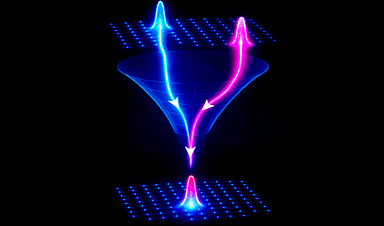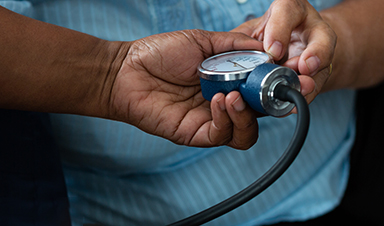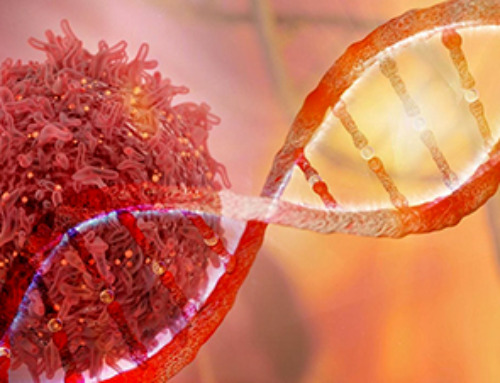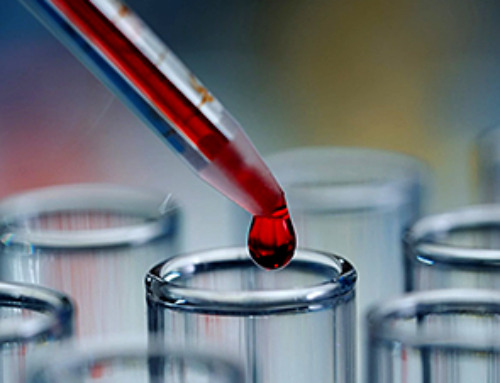Public health experts are divided over how many people are getting long COVID-19, a potentially debilitating condition that comes after a patient has recovered from the coronavirus.
Ill effects from the condition can include fatigue, pain, neurological issues and even changes in mental health.
Initially, public health officials believed that only a small minority of people would suffer from long COVID-19. But some studies now indicate a majority of those infected with the coronavirus are experiencing long COVID-19 symptoms.
Still, estimates on the numbers of people with long COVID are all over the map.
Researchers from the Penn State College of Medicine found that more than half of COVID-19 survivors had long COVID-19.
Another study from the University of Arizona found that about 2 out of 3 people who experienced mild or moderate cases of coronavirus had long-lasting symptoms.
Other reports have been more conservative, estimating anywhere between 10 to 30 percent of those infected develop long-term symptoms. Those who experience ongoing symptoms from long COVID-19 have sometimes come to be known as COVID-19 long haulers.
One problem in figuring out how many people get long COVID-19 is defining it.
Apart from the wide range of symptoms, there is still debate over when a person is considered to have long COVID-19. Some health care authorities consider a patient to have the condition if symptoms persist after three to six weeks, while other think it should be considered on a longer basis.
Jim Heath, president and professor at the Institute for Systems Biology, is leading the Pacific Northwest consortium researching long COVID-19 as part of the National Institute of Health's (NIH) RECOVER initiative, which is looking into the post-COVID-19 condition and potential ways of preventing and treating it.
Heath told The Hill that if one definition of long COVID-19 was being used — one in which symptoms lingered about four to six weeks after infection — then roughly half of those infected would be considered to have long COVID-19.
According to Heath, an estimate of 15 to 20 percent of coronavirus survivors experiencing long COVID-19 after six months was a reasonable "educated guess" and he added that there was evidence to support that rate of occurrence.
When reached for comment by The Hill, the NIH said initial studies have found that at least half of COVID-19 patients who were hospitalized reported "persistent weakness or fatigue" months after their recovery.
Studies on the prevalence of long COVID-19 have been "relatively few," according to the NIH, and they have all focused on people who had symptomatic cases of COVID-19.
The NIH said numerous observational studies in both children and adults are being conducted to find potential treatments for long haulers. The agency has requested applications for new clinical trials to launch this summer to test potential ways of preventing and treating long COVID-19.
"In contrast to the wealth of prior knowledge that led to the vaccines for Sars-CoV-2 and a host of other viruses, there is much less known about what causes persistent symptoms following infectious illnesses or how to best treat them. As a consequence, there is more knowledge needed to fuel the scientific advances to come," the NIH said.
News
Mystery Solved: Scientists Find Cause for Unexplained, Deadly Diseases
A study reveals that a protein called RPA is essential for maintaining chromosome stability by stimulating telomerase. New findings from the University of Wisconsin-Madison suggest that problems with a key protein that helps preserve chromosome stability [...]
Nanotech Blocks Infection and Speed Up Chronic Wound Recovery
A new nanotech-based formulation using quercetin and omega-3 fatty acids shows promise in halting bacterial biofilms and boosting skin cell repair. Scientists have developed a nanotechnology-based treatment to fight bacterial biofilms in wound infections. The [...]
Researchers propose five key questions for effective adoption of AI in clinical practice
While Artificial Intelligence (AI) can be a powerful tool that physicians can use to help diagnose their patients and has great potential to improve accuracy, efficiency and patient safety, it has its drawbacks. It [...]
Advancements and clinical translation of intelligent nanodrugs for breast cancer treatment
A comprehensive review in "Biofunct. Mater." meticulously details the most recent advancements and clinical translation of intelligent nanodrugs for breast cancer treatment. This paper presents an exhaustive overview of subtype-specific nanostrategies, the clinical benefits [...]
It’s Not “All in Your Head”: Scientists Develop Revolutionary Blood Test for Chronic Fatigue Syndrome
A 96% accurate blood test for ME/CFS could transform diagnosis and pave the way for future long COVID detection. Researchers from the University of East Anglia and Oxford Biodynamics have created a highly accurate [...]
How Far Can the Body Go? Scientists Find the Ultimate Limit of Human Endurance
Even the most elite endurance athletes can’t outrun biology. A new study finds that humans hit a metabolic ceiling at about 2.5 times their resting energy burn. When ultra-runners take on races that last [...]
World’s Rivers “Overdosing” on Human Antibiotics, Study Finds
Researchers estimate that approximately 8,500 tons of antibiotics enter river systems each year after passing through the human body and wastewater treatment processes. Rivers spanning millions of kilometers across the globe are contaminated with [...]
Yale Scientists Solve a Century-Old Brain Wave Mystery
Yale scientists traced gamma brain waves to thalamus-cortex interactions. The discovery could reveal how brain rhythms shape perception and disease. For more than a century, scientists have observed rhythmic waves of synchronized neuronal activity [...]
Can introducing peanuts early prevent allergies? Real-world data confirms it helps
New evidence from a large U.S. primary care network shows that early peanut introduction, endorsed in 2015 and 2017 guidelines, was followed by a marked decline in clinician-diagnosed peanut and overall food allergies among [...]
Nanoparticle blueprints reveal path to smarter medicines
Lipid nanoparticles (LNPs) are the delivery vehicles of modern medicine, carrying cancer drugs, gene therapies and vaccines into cells. Until recently, many scientists assumed that all LNPs followed more or less the same blueprint, [...]
How nanomedicine and AI are teaming up to tackle neurodegenerative diseases
When I first realized the scale of the challenge posed by neurodegenerative diseases, such as Alzheimer's, Parkinson's disease and amyotrophic lateral sclerosis (ALS), I felt simultaneously humbled and motivated. These disorders are not caused [...]
Self-Organizing Light Could Transform Computing and Communications
USC engineers have demonstrated a new kind of optical device that lets light organize its own route using the principles of thermodynamics. Instead of relying on switches or digital control, the light finds its own [...]
Groundbreaking New Way of Measuring Blood Pressure Could Save Thousands of Lives
A new method that improves the accuracy of interpreting blood pressure measurements taken at the ankle could be vital for individuals who are unable to have their blood pressure measured on the arm. A newly developed [...]
Scientist tackles key roadblock for AI in drug discovery
The drug development pipeline is a costly and lengthy process. Identifying high-quality "hit" compounds—those with high potency, selectivity, and favorable metabolic properties—at the earliest stages is important for reducing cost and accelerating the path [...]
Nanoplastics with environmental coatings can sneak past the skin’s defenses
Plastic is ubiquitous in the modern world, and it's notorious for taking a long time to completely break down in the environment - if it ever does. But even without breaking down completely, plastic [...]
Chernobyl scientists discover black fungus feeding on deadly radiation
It looks pretty sinister, but it might actually be incredibly helpful When reactor number four in Chernobyl exploded, it triggered the worst nuclear disaster in history, one which the surrounding area still has not [...]





















